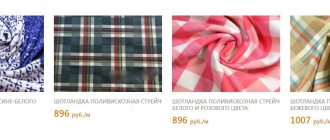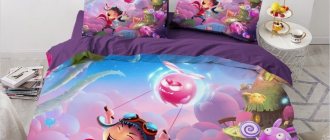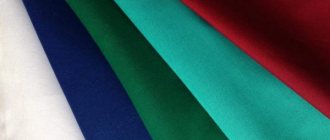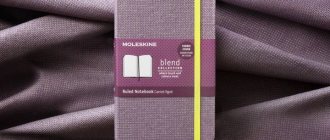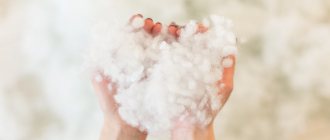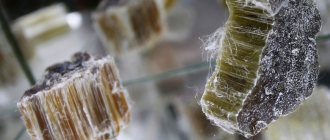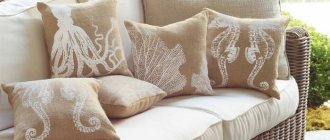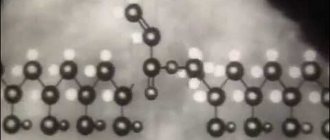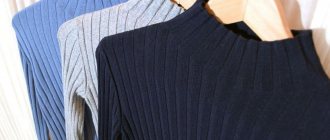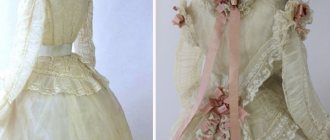Polysatin is a fabric that has the composition: 50% cotton and 50% polyester. Thanks to this composition, polysatin has good properties - it is durable, does not wrinkle, does not shrink after washing, does not wrinkle, dries quickly and is easy to iron. This fabric is very practical and will last you a long time!
The textile industry is developing at tremendous speed, which contributes to the emergence of new varieties of fabrics. Polysatin refers specifically to modern fabrics that appeared after the invention of polyester at the beginning of the 20th century. From the name of the fabric you can guess that it is a satin weave material , made entirely or partially from polyester . Not everyone knows the technological nuances and characteristics of this matter, so it is important to study these aspects in more detail.
Fabric composition and production
The composition of polysatin can vary; it is not something specific and constant. Semi-natural fabrics are often found, containing no more than 50, but not less than 10 percent cotton. Synthetic versions made entirely of polyester are also common. The percentage (proportion) of cotton fibers and polyester may vary.
- An attractive material made entirely from polyester, it is considered more practical and suitable for multi-purpose applications, such as upholstery, creating waterproof outerwear (jackets, raincoats, workwear) or durable bags.
Mixed variations due to their hygienic characteristics are more suitable for industrial tasks. Like natural fabrics, semi-natural polysatin is used for household purposes: it is used to make textiles for the home, for comfortable everyday clothing and bed linen.
What is polysatin?
In its name, polysatin combines two concepts - polyester fibers and satin (satin) weave.
The peculiarity of this fabric is the double twisting of the fibers and the predominance of weft threads on the front side of the fabric, resulting in greater strength and thinness (70-100 g/square meter), as well as a smooth, silky and slightly slippery surface.
This material is very beautiful, it is easily painted in various bright and durable colors, which allows you to create clear patterns, including 3D prints that accurately reproduce color photographs.
When choosing polysatin, you should remember one significant feature: its composition is not constant. This fabric can be either completely synthetic or contain a certain proportion of cotton, which varies for different types of fabric and different manufacturers. In accordance with this, two main varieties of this material are defined:
- Industrial polysatin, which consists entirely of polyester fibers. It is used to make bright 3D awnings, bags, ties, outerwear, upholstery of mattresses and furniture, curtains, and sometimes low-price bed linen.
- Household polysatin with the addition of cotton raw materials (most often 30-50%). This fabric is more hygienic and closer to natural materials, while it is much cheaper and very beautiful. It is used mainly for various home and casual clothing, corsetry, and home textiles. The hit of consumer demand is bed linen made of mixed polycotton material with a 3D effect, representing a variety of realistic and colorful images of any style that will become a real decoration for the bedroom, and at the same time it is quite affordable.
Properties and characteristics
Polysatin is characterized not only by its composition, but also by the type of weave - satin, or satin, achieved by double twisting of threads, the warp is made of dense threads, and the front surface is formed by thinner weft fibers. Thanks to this weaving, the material is especially smooth, wear-resistant and shiny. And the reverse side is quite rough to the touch. Synthetic fibers in the composition also play an important role: they give the fabric a smooth surface and incredible silkiness. Polysatin is unpretentious: it does not wrinkle, and also does not require complex, time-consuming care.
Brief features of polysatin:
- Amazing softness, slippery smooth surface, even a little cold to the touch.
- Strength, durability, abrasion resistance (withstands repeated washing).
- It has a beautiful external shine; this property is very similar to silk, which is why polysatin is sometimes called “artificial silk”.
- Huge potential for making various things.
Description
Thin but dense fabric, a combination of polyester and satin. The main feature is that it is not always a purely synthetic fabric. Sometimes it contains natural cotton. The most popular purpose of this fabric is sewing bed linen of various designs: polysatin fabrics of various shades, with bright designs and patterns are used. These products are durable and practical, but pay attention that the composition still contains cotton fibers. Pure polyester fabrics are not the most comfortable option for sleeping, as they do not allow air to pass through and do not absorb moisture well.
What's included
The composition varies depending on the purpose of the textile. If this is a household fabric, for example, for making an awning or a backpack, choose a composition with a predominance of polyester. If you are looking for fabric for sewing home textiles, the composition must contain cotton. The combination of synthetics and natural fibers allows for greater strength, durability and comfort to wear.
Satin in the name refers not to the composition, but to the type of weaving. It is characterized by the use of four threads of different densities in the base and one for the front surface. Satin is usually made from natural cotton.
Advantages of polysatin linen
Strength and durability: the cotton content makes the material lightweight . And polyester gives it another quality - strength . Thanks to this, things made from light and thin fabric of the new generation also have increased strength and are able to maintain their quality without changes after repeated washing and constant use.
Silky : It is no coincidence that polysatin is called rayon. Not only does it have a shiny hue, but it is also perfectly smooth, soft, and pleasant to the touch.
Effectiveness and originality: “artificial silk” is a real find for the home designer! So, manufacturers offer many different colors. Another novelty of this material is the reproduction of 3D designs and patterns on a smooth surface. This effect leaves no one indifferent.
Unpretentiousness to special care. The artificial product washes well, does not change size when washed, does not fade and retains its original color and shape because it does not deform. It also dries quickly and does not require ironing or steaming.
Cost-effectiveness and practicality: the use of polyester fibers in the production of this mixed fabric allows us to reduce the price of the material and make its purchase affordable.
In an objective assessment of this material, it should be noted that some of its types also have some disadvantages.
Pros and cons of polysatin linen
Among the obvious advantages of polysatin, users highlight:
- Softness, which is characteristic of natural cotton.
- Shiny and silky surface thanks to satin weave.
- Strength, durability, resistance to physical influences.
- Doesn't wrinkle, doesn't shrink, doesn't lose shape.
- An excellent option for products in which you need to be outside for a long period of time: you will not freeze in them, you will not get wet, and you will not be blown by the wind.
- Affordability: everyone can afford to buy polysatin.
Obvious disadvantages of this material:
- It does not absorb moisture well (this disadvantage can also be an advantage if we are talking about products that must withstand bad weather well).
- Low level of breathability; the higher the proportion of polyester in the composition, the lower this level.
- It becomes electrified because it accumulates static electricity.
- Pellets may appear.
Advantages of polysatin linen
Important properties for bed linen are reliability, durability and practicality. Polysatin can guarantee all these qualities thanks to the organic combination of cotton and polyester. The proportion of soft natural fibers in a product directly affects its performance properties. The more cotton there is in this unique material, the softer and better quality the bed linen will be. Another advantage: polysatin resembles delicate silk, so products made from it look flawless in appearance. Delicate fabric is produced in a variety of colors: the colors on the canvas do not fade even after washing. Contaminants do not eat into the fabric, it literally repels them, so stains can be washed off easily.
Disadvantages of polysatin linen
Polysatin bed linen is very beautiful, durable and has a high level of wear resistance: it does not shrink and does not lose color. However, such a kit contains synthetics, so these products will not be comfortable to use for everyone. Linen made from polysatin does not allow air to pass through well and absorbs moisture. The more polyester it contains, the more the fabric will become electrified, and pellets will form on the surface.
Satin and polysatin - how not to make a mistake with your choice
It is not easy for an uninitiated person to understand the mysterious names of new fabrics. Classic materials are undergoing changes, but are they always attractive to the consumer? , which has undoubted advantages, and polysatin, which has successfully supplanted it , each of these materials has its own advantages. Before buying bed linen, you should get acquainted with their features so as not to make a mistake with your choice.
Main characteristics
Satin is a fairly dense cotton fabric with a characteristic complex weave. The delicate and smooth material is pleasantly refreshing in the heat and retains warmth in the winter, allows the skin to breathe, does not shrink or stretch when washed, and keeps the designs fresh and bright for a long time . Beautiful and high-quality cotton linen can delight you for many years with its exquisite attractiveness and silky touch.
Adding synthetic fibers to the complex satin weave of cotton made it possible to obtain a new fabric. Smooth and durable polysatin successfully combines the best characteristics of polyester and satin.
Among its many advantages:
- wear resistance and long service life while maintaining all the advantages. The material owes these qualities to polyester additives and satin weaving;
- financial accessibility - impeccably high-quality, but cheap polysatin bed linen is very popular;
- easy to care for - products made from this fabric are easy to wash, do not fade and dry quickly, do not require ironing;
- the cotton component of the polysatin ensures a pleasant softness of the fabric;
- Like real satin, fabric mixed with polyester retains its bright colors and visual appeal for a long time.
How not to make a mistake with your choice
Innovative technologies and a thoughtful combination of natural and synthetic fibers have made it possible to obtain a new generation of fabric. Products made from it are in demand and popular, because cheap polysatin bed linen is difficult to distinguish from analogues made from natural material.
While the basic characteristics are similar, the main difference is the cost and composition of the fabrics. Therefore, before purchasing, you should decide on your priorities - cheap and high quality or only natural composition. It is fair to note the disadvantages of the two materials - real satin cannot be cheap, and polysatin with too high a polyester content has poor moisture permeability . However, a thoughtful composition of fabrics and the use of the latest technologies make it possible to successfully cope with both shortcomings, as evidenced by the products.
Two seemingly incompatible concepts - cheap and high quality - distinguish products from a well-known manufacturer. Beautiful bed linen made of cotton and polysatin amazes with the brightness of the colors and the pleasant delicacy of the fabric, the sophistication of the shades and the reality of high-quality 5D images . Everyone is free to make the choice between natural material and fabric with the addition of synthetic fibers on their own, now you know their distinctive features. The Ivanovo textile company is pleased to offer you the best - high-quality products at a pleasantly affordable price.
Polysatin - synthetic bedding?
Despite the name, which may confuse people who are not very experienced in the textile field, polysatin is considered a synthetic fabric. The mention of “satin” in the name refers only to the satin method of weaving this material. Unscrupulous suppliers can manipulate based on this similarity, passing off polysatin as natural fabric. Carefully study the ingredients before making a purchase. Yes, the composition may contain cotton fibers, but they cannot be more than 50 percent. Polysatin is most often made entirely from polyester or cotton is added to polyester.
If you come across the name “ microsatin ” or “ microfiber ”, do not be confused. This fabric is also considered polysatin. A beautiful, smooth silk-like fabric is an affordable option for bedding. However, remember that this is synthetic or semi-synthetic material, which has characteristic disadvantages. Not suitable for people with sensitivity/allergy to synthetics.
Ironing
Polysatin bed linen is easy to dry and does not require ironing. But if it seems to you that without this, your linen did not receive full care and the ironing process is mandatory for you, do it through a damp cloth.
Attention! If you decide to iron polysatin bed linen, do not heat the iron as much as possible: the material will not retain its quality when exposed to high temperatures. Suitable ironing modes are “synthetic” or “silk”.
The general impression of polysatin underwear is very favorable. According to buyers, the sensations from contact are the softest and provide tactile pleasure. Polysatin linen meets all consumer requirements. The most valued sets are those containing at least 50% cotton. Thus, modern industry provides the optimal combination of quality and comfort at an affordable price.
Advantages and disadvantages of fabric
Before making a choice in favor of one material or another, we advise you to carefully read the detailed description of the characteristics of the fabric: study not only the pros, but also the cons. Sometimes the disadvantages can be played out in favor of the fabric if you are pursuing a specific goal. Positive qualities of polysatin that distinguish this material from its competitors:
- Quietly withstands many washes. With proper use, the appearance of the fabric will remain at its best even after several years.
- The canvas is easy to care for, does not shrink or wrinkle.
- The smooth surface of polysatin has a beautiful shine, and from the inside the fabric is slightly rough and matte.
- The canvas resembles silk, but is not so expensive.
- The dyed fabric does not lose its brightness, the colors do not fade, and are not afraid of direct sunlight.
There are not many disadvantages of polysatin, but several features characteristic of synthetic fabrics in general can be identified:
- Low level of breathability, does not absorb water well.
- It is electrified, which can cause discomfort upon contact with the skin.
- Tends to form pellets on the surface.
Mixed fabrics with satin
In addition to polyester polysatin and classic cotton sateen, there are other mixed sateen weave fabrics. Their properties vary depending on the ratio of not only cotton and polyester, but also other fibers, both natural and artificial or synthetic:
- Satin double. Smooth, pleasant to the touch fabric made of cotton and viscose. Popular option for lining.
- Crepe satin. Double-sided crepe cotton with rayon or polyester added.
- Soft satin. Durable, wear-resistant cotton with viscose.
- Muncy. Soft, warm fabric that contains fleece made from polyester fibers.
- Slim satin. Thin, weightless polyester fabric.
- Stretch. Cotton fabric that stretches due to the elastane in the composition.
Polysatin - what kind of fabric is it?
Polyester satin or polysatin has replaced natural satin. The latter is expensive, especially its silk varieties. Cotton linen is more often used in the manufacture of bed linen, but even its production has become expensive.
For this reason, polyester began to be introduced, which demonstrated high consumer qualities. Now we have managed to overcome the main disadvantages of synthetics through the use of a special weaving - satin, which affects the wear resistance and density of the fabric. So, polysatin - what is it?
From the description it is clear that we are talking about a material of synthetic origin, while the satin weave provides high strength and an attractive appearance. The front surface is smooth and silky, thanks to the weft threads that form it.
Satin weave diagram and graph
Polysatin is a fabric that combines the advantages of satin and polyester, and bed linen manufacturers value it for this. What is the difference between natural satin and polysatin? Exclusively by composition. In the second case, synthetics predominate in the fabric.
What is better for bed linen: satin, polysatin, percale, poplin or calico? Polysatin is a fabric of synthetic origin, so it will be inferior to natural ones in terms of hygiene, but high-quality material is stronger and holds color better.
Sometimes it is difficult to determine by sight what kind of fabric is used for sewing sheets and duvet covers - the product looks so good, it allows air and moisture to pass through, and is soft to the touch. Polysatin fabric has a mixed composition, cotton fibers are what makes the fabric more breathable and comfortable. The higher the content of natural components, the better the characteristics of the product. But they also increase its cost, albeit slightly.
We found out what kind of material this is - polysatin, and now we find out its composition.
Areas of application of polysatin fabric
Polysatin is truly multifunctional and practical. Depending on its composition, it can be used for sewing in a variety of areas of both everyday and professional life. The most popular polysatin products:
- Durable bedding. In this area, polysatin directly competes with natural fabrics, from which the following sets are usually sewn: satin, calico and poplin.
- Clothes for both adults and children: dresses, shirts, sundresses, jackets, raincoats.
- Work clothes: wear-resistant jackets, windbreakers, workwear.
- Accessories that are not afraid of bad weather: durable bags, comfortable backpacks.
- Upholstery of furniture, such as sofas, mattresses, etc.
- Home textiles: tablecloths, bathrobes, furniture covers, curtains.
Bamboo
Bamboo is a natural fabric that has recently become more and more popular. The main advantage of this material is its complete hypoallergenicity. Bamboo is highly breathable, allowing the skin to access oxygen. In addition, natural fiber has antibacterial properties. Additional advantages are the antistatic effect, so such underwear does not have the ability to become electrified. In addition, bamboo does not absorb odors and has anti-slip properties. Bed linen made from such fabric is quite expensive, which not everyone can afford.
How to choose polysatin
First, carefully study the composition and manufacturer’s recommendations. You must decide for yourself what characteristics of the fabric are important to you. If you focus on strength and durability, you can purchase polysatin, where synthetics predominate in the composition. If you still count on a more hypoallergenic and breathable fabric, choose a fabric with a predominance of cotton.
When choosing bed linen, focus not only on the presence of cotton threads , but also on the design of the fabric. If you order fabric online, it is better to visit the store and check the following parameters in person: density, brightness, image size and other nuances that are difficult to see in the photograph.
Fabric characteristics
Polysatin is a new fabric on the textile market. It is based on polyester and cotton fibers. They are first twisted in half and then subjected to complex processing to give it perfect smoothness. The satin weave of the threads gives the material a special shine. It is no coincidence that the fabric has a second, well-deserved name - “artificial silk”.
The higher the percentage of synthetic content, the cheaper the material. However, she has many wonderful qualities.
- Quite high density - from 70 to 100 g/m2.
- The tensile strength is due to the strong twisting of the fibers.
- Wear resistance and durability characteristic of synthetic products.
- The material does not shrink and does not fade when washed.
- Unpretentiousness: polysatin is easy to wash and dries quickly. The material does not need ironing because it does not wrinkle.
The negative qualities that often stop a buyer when choosing bed linen made from “artificial silk” include low rates of aeration and hygroscopicity. Polysatin, containing more than half of polyester in its composition, is poorly breathable and does not absorb excess moisture.
Types of polysatin
Polysatin comes in two main types. It’s easy to identify the variety; just take a closer look at the composition:
- Industrial . Polyester gives this purely synthetic fabric extraordinary strength, as well as the ability to repel dirt and moisture. This type of polysatin is suitable for sewing products that are subject to great physical impact: awnings, backpacks, furniture covers.
- Household . The proportions of cotton and polyester in the composition vary, the fabric acquires new properties depending on this ratio. But in appearance the canvas is very reminiscent of natural material. For children, choose polysatin with the highest cotton fiber content.
What is the difference between polysatin and satin?
The first difference: polysatin is inferior to satin in tactile sensations. Satin fabrics contain natural cotton, which gives the fabric softness, increases breathability and improves absorbency. However, this difference is balanced by the unusual wear resistance of polysatin, which will easily survive many washes and wears.
- Compared to classic satin, the cost of polysatin is much lower. Of course, the price of the fabric is influenced by the technology of its creation. This is a complex process that includes many independent production stages, on which the quality of the raw materials depends. These are the collection of raw materials, processing method, brightness of coloring, adding special decorative effects and design in general. But polyester fabric will most often cost less than pure cotton fabric. Natural fabrics are pleasant to the touch, they “breathe”, and are also suitable for people with sensitive and allergic skin.
When choosing satin or polysatin, be sure to pay attention to the composition, as well as the reputation of the supplier. It is not always possible to check the fabric for authenticity, so it is better to read reviews before purchasing. TISSURA cooperates with famous textile manufactories, and our products undergo examination to ensure compliance with the declared characteristics. Many exclusive fabrics presented in our House of Fabrics are rare designer creations, the high quality of which is beyond the slightest doubt. If any questions arise, our consultants will come to the rescue and help you navigate your choice.
Rules of care
There are no strict requirements for caring for polysatin, but you should still adhere to some recommendations, for example, from the manufacturer. Basic tips, the observance of which preserves the presentable appearance of polysatin products:
- Wash correctly: the temperature should not be higher than 40 degrees, machine wash mode should be selected on a delicate cycle, as for silk. Do not wash at the same time as multi-colored or terry items.
- Do not select high speeds in automatic spin mode.
- Does not need ironing. But if desired, you can iron it through a damp cloth at a low temperature.
- Do not dry the fabric using a dryer or heating devices; give preference to the most natural drying conditions.
Product care
In order for your sleeping linen to last for many years, you need to know a number of recommendations for caring for it.
- Machine wash (delicate cycle) or hand wash with water temperature no more than 40 degrees.
- Do not use chlorine-containing products.
- Dry cleaning is prohibited.
Wash the sets separately from light-colored items with special powder for colored laundry.- It needs to be dried flat.
- Polysatin linen is rarely ironed. If it is dried correctly, it will be smooth after washing. In any case, the temperature should not be high. Preheat the iron to the minimum setting or set the setting to “Silk” or “Synthetic”.
The quality of polysatin bed linen is no worse than other analogues. Like any other product, it has a number of advantages and disadvantages, which everyone evaluates for themselves. This material is used to create stylish sets for any design. The stereotype that synthetics in the composition of PBC have a negative impact on health has no justification, because Allergies and irritation can also occur when using natural models. Modern production makes it possible to improve the wear resistance of the fabric, increasing its service life: beautiful linen will last you a long time. Reviews about the quality of polysatin PCB also indicate that this type of bed linen was to the taste of customers.
Summary
Polysatin is the fabric for bed linen of the new season. In terms of its qualities, polycotton is not inferior to conventional fabrics, but is much superior in price. In addition, it has a number of properties that some other synthetic fabrics do not have.
- Practical fabric, resistant to dirt and frequent use.
- The fabric does not lose its color after repeated washings, and it is easy to iron.
- The fabric does not fade or stretch even after 200 steam cycles.
- Polysatin is resistant to mechanical and chemical damage (with the exception of bleaching agents).
Satin
Satin occupies a leading position among fabrics for bed linen. This material is valued due to its high wear resistance, hypoallergenicity and practicality. The fabric retains its bright and rich colors even after numerous washes. Satin is made using a special technology using two types of fibers. The material is very soft and pleasant to the touch, and also has excellent absorbent characteristics. It belongs not only to the most popular, but also to the most expensive types of fabrics.
5 1
